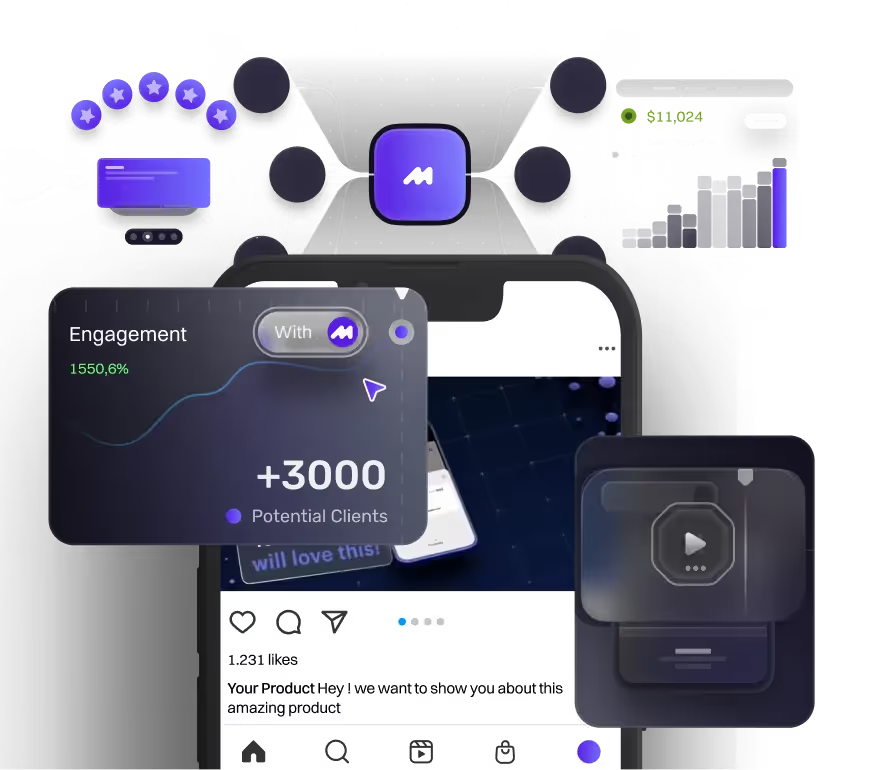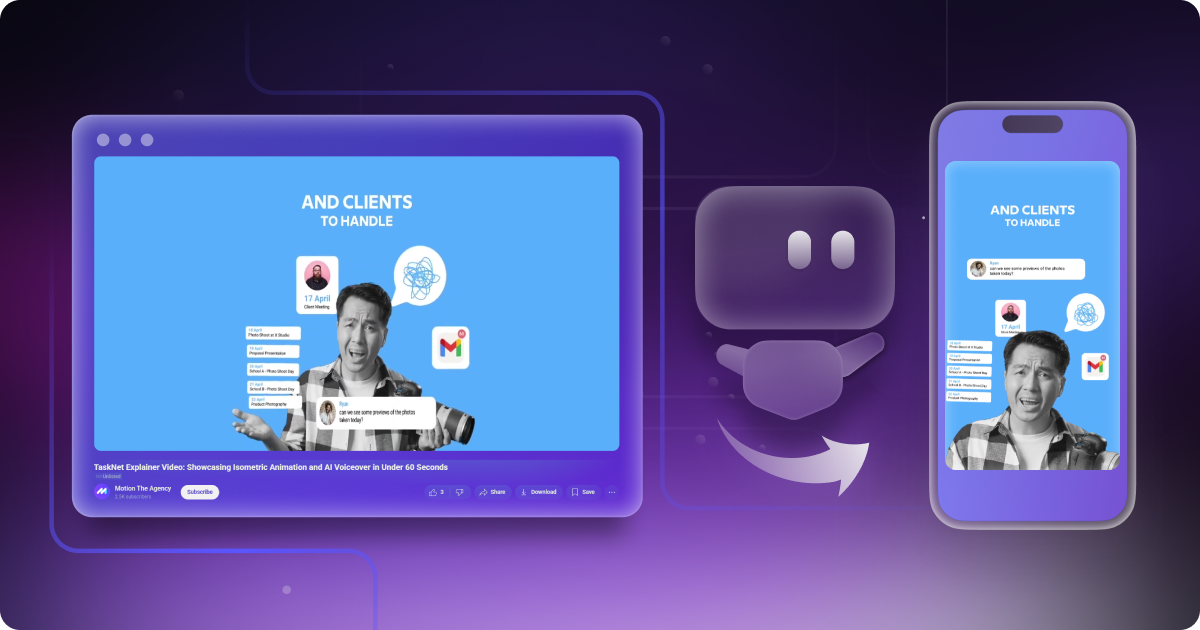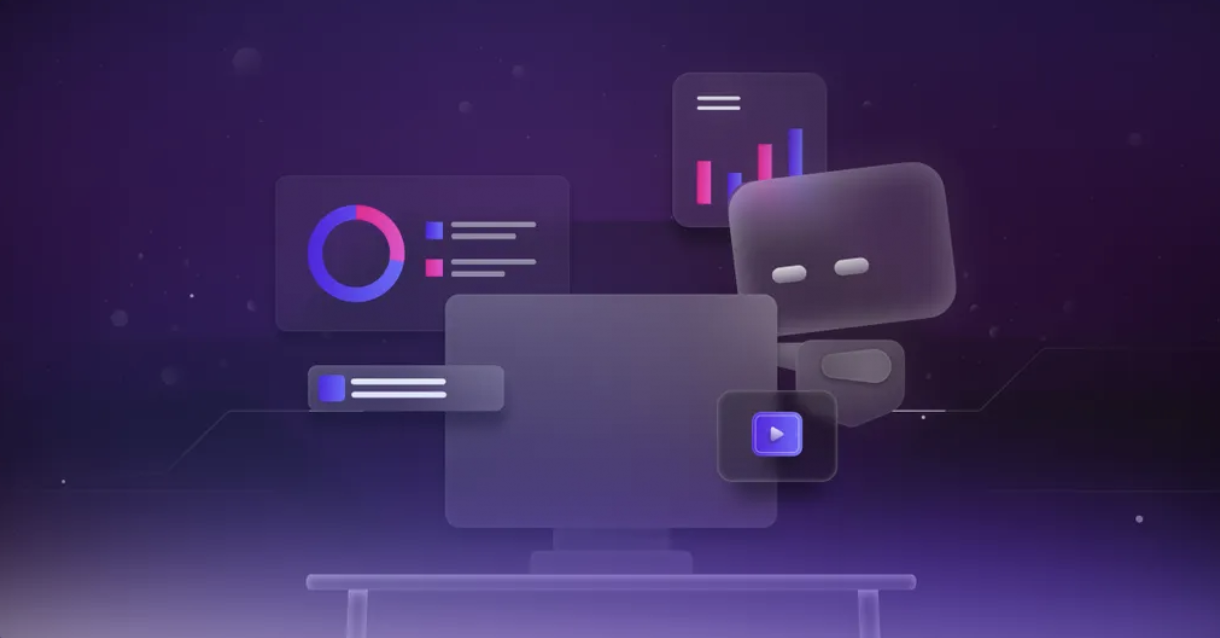The Future of 2D Animation and AI: What’s Next for Animators
.png)

As a design agency that started with a strong motion design background, especially in 2D animation, we’ve seen how much the industry has evolved. The rise of 3D, AR, and VR has definitely caught everyone’s attention. And now, with AI making it easier than ever to create animated videos, it’s fair to wonder if 2D animation is starting to lose its place.
The truth is, it’s not going anywhere. 2D animation is still just as relevant as ever. It’s flexible, approachable, and easy to adapt for almost any brand. In many ways, AI isn’t replacing it but helping it get even better and more accessible.
This blog continues our conversations from “The Future of AI in Motion Design” and “2D vs 3D Animation.” This time, we’re looking at the future of 2D animation and how AI is becoming a part of it. We’ll also share what our team thinks about where things are headed.
If you’ve spent some time on our site, you’ve probably noticed that animation is what we do best. We’ve branched out into web design, UI motion, and 3D projects, but 2D animation is still what most people know us for. Lately, though, 3D, AR, and VR have been getting a lot of buzz. AR and VR aren’t really our main focus, but they did make us stop and think. Is 2D animation still getting the attention it deserves, or is it evolving into something new?
So, do people still use 2D animation?
Before we get into the future, let’s take a moment to talk about where 2D animation stands today. Like we mentioned earlier, 2D animation is one of the most versatile and accessible types of content out there, and that’s a big reason it’s still so popular. It’s flexible, expressive, and efficient, which makes it a favorite for creators and brands that want to tell stories in a simple and engaging way.
No matter the style, 2D animation always feels familiar and timeless. Whether it’s hand-drawn animation or character-driven storytelling, there’s something about it that connects with people right away. Even in motion design, where visuals can move in more abstract ways, we still find ourselves drawn to 2D styles. It reminds us of the old TV ads, cartoons, and brand videos we grew up with, and that little bit of nostalgia makes it easy to connect with.
Another reason 2D animation continues to stand out is the creative freedom it gives artists. The style has evolved a lot over the years, which means it can fit almost any mood or message. It can be realistic or abstract, playful or professional, colorful or minimal, all while keeping a consistent look and feel. That flexibility helps brands show their personality while keeping things visually on point.
Not to mention, from a production standpoint:
- Lower entry barriers (cost and technical requirements)
- Faster production timelines
- Easier to modify and revise
- Fewer technical constraints
All of this makes 2D animation one of the most practical and efficient types of video production today. It’s approachable, adaptable, and still one of the best ways to grab attention and tell stories that stick.
While planning this blog, we also noticed that 2D animation is still widely used across almost every industry. The difference is that each industry applies it in its own way, depending on their goals, audience, and message. let’s briefly talk about it:
Choosing the right video style
We’ve talked about this more in our “2D vs 3D Animation” blog, so if you want the full breakdown, definitely check that one out. But to keep it simple, every animation style has its own time and place.
Some projects work better in 2D because it’s clean, clear, and easy to follow. Others call for 3D when you need more depth or realism. The same idea also applies to AR and VR video styles, and even live-action shoots. Each one brings its own strengths depending on the story you want to tell and how you want your audience to experience it.
When you’re deciding which one to use, think about a few key things:
- Industry demand and application – What type of content are you creating, and where will it be used?
- Who it’s for and who’s creating it – Your audience and your team both play a big part.
- What you want to highlight – What’s the main message or feeling you want people to take away?
Once you know those things, it’s a lot easier to pick the right direction.
How AI is shaping the future of 2D animation?
If you’ve been on our blog before, you’ve probably noticed we talk a lot about AI. We’ve shared how we use it, tested different tools, and talked about how it’s changing both our workflow and the creative industry in general. So yeah, we know our way around AI and how it’s shaping the world of animation. We’re also very aware of the worries out there, especially the fear that AI might replace creative jobs someday.
Here’s how we see it. Finding the right balance is the key to staying relevant as an animator in this new AI era. AI isn’t slowing down anytime soon, so instead of fighting it, learning how to use it to boost your creativity and speed up your work is the smarter move.
Animators need to start changing how they think about AI. It’s not this weird or threatening tool that’s coming for your job. It’s actually something that can make your work faster, more exciting, and open up new creative possibilities you probably wouldn’t have explored otherwise.
The one thing humans still do better than AI is storytelling and creativity. In 2D animation, where the visuals are simpler and less detailed than 3D, the real power comes from how you tell the story. The message, timing, and delivery are what make 2D animation shine. That’s why we think the best way to find balance is to use AI as a tool that takes care of the repetitive stuff, so animators can focus more on the creative and artistic side of their work.
Here are a few areas where AI really helps in animation:
- 2D asset creation
- Speeding up manual tasks like removing backgrounds, cleaning up audio, or filling in missing footage
- Helping with coloring and shading automatically while matching style references
- Supporting early visualization by quickly generating color schemes or style options
That said, human input is still a must. Manual cleanup is needed to get that polished, professional finish, especially for complex designs. Keeping consistency across multiple frames still takes a trained eye and creative judgment.
What do our MTA team thinks about AI?
While planning this content, we shared a poll with our 2D animation team to ask about their experience using AI in their daily workflow. Here’s what we found.
.png)
Most of our team actually uses AI in their day-to-day work as 2D animators. Only around 20 percent don’t use it regularly, but they still experiment with it from time to time. When we asked what they use AI for, the answers were consistent. Most mentioned AI tools for 2D animation, such as asset generation, background cleanup, and AI voiceovers. The voiceovers are especially helpful when estimating video length before the final VO artist steps in. Others use AI to find references or spark ideas before starting a new animation project.

At Motion The Agency, we’ve always believed that staying relevant in the world of animation means learning to adapt to new tools. While we’re not a dedicated 2D animation agency, we regularly produce 2D animation projects as part of our broader creative work. Every one of our 2D animators agrees that AI makes their workflow faster and smoother. When used the right way, AI for animation studios can automate repetitive tasks and speed up production without taking away from creativity. Simple jobs like background cleanup or fixing small details that once took hours can now be done in minutes. This gives our team more time to focus on storytelling, design, and the motion details that bring projects to life.
Our team also shared that using AI helps us stay on track with deadlines while keeping everyone’s well-being in check. In 2D animation projects, timing is everything, and AI gives us the flexibility to move faster without overworking the team. It takes care of repetitive tasks, like cleanup or file prep, so our animators can focus on the creative parts that actually need their attention. It’s not about replacing effort — it’s about working smarter and giving the team more breathing room to produce their best work.
When we asked the big question — “Will AI replace 2D animators?” — the answers were mixed. Some said yes, others said no, and a few said it depends. So we followed up and asked why. Interestingly, while opinions on the question itself differed, the reasoning behind their answers was quite similar.
“AI today can help create initial drafts of stylized storyboards and add animation flares. It's also catching up in video generation, particularly in stylizing footage and creating 3D scenes from 2D images. However, when it comes to replacing animators for keyframe and motion direction, a human touch is likely still needed”
- Pujita, Motion The Agency, Senior 2D animator
Every one of our 2D animators agrees that AI is becoming more capable and can now handle many stages of production. But it still can’t replace human creativity. The emotional timing, storytelling instincts, and nuanced motion that make animation feel alive still need a person behind them. AI can make production faster and more affordable, but it can’t replace the connection that comes from human design choices and creative vision.
Conclusion
2D animation isn’t going anywhere. Even with all the buzz around 3D, AR, VR, and AI-generated content, 2D animation services are still thriving. They’re flexible, accessible, and easy to connect with on an emotional level. The future of motion design isn’t about choosing between creativity and technology. It’s about finding ways to make them work together. AI is just one part of that evolution, helping ideas come to life faster and easier.
At Motion, we’ve seen it firsthand. AI helps us streamline workflows, handle asset creation, and boost productivity. But the real heart of it, the creativity, emotion, and storytelling, still comes from people. The best results happen when both sides work together. AI should feel like a creative teammate, not a replacement.
The future of 2D animation production will belong to creators who know how to blend artistic instincts with smart tools. Whether you’re experimenting with AI tools for 2D animation or creating every frame by hand, what really matters is how your story connects with people.
At the end of the day, 2D animation will always have that timeless charm where design, motion, and emotion come together to tell stories that stick. With the right balance of human creativity and AI innovation, this space will only keep growing.
If you’re thinking about creating your own 2D animation project, check out our 2D Animation Services and book a quick call with our team. Let’s bring your story to life together.
table of content
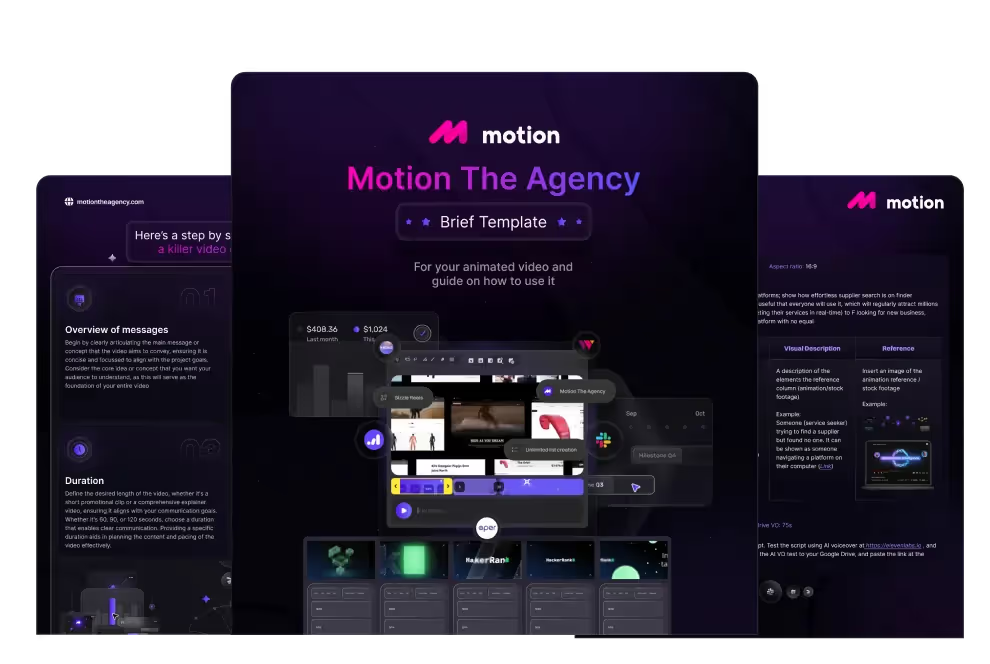
creative brief

Contact Us
Ready to elevate your brand? Contact us for your
Free Custom Video Sample
